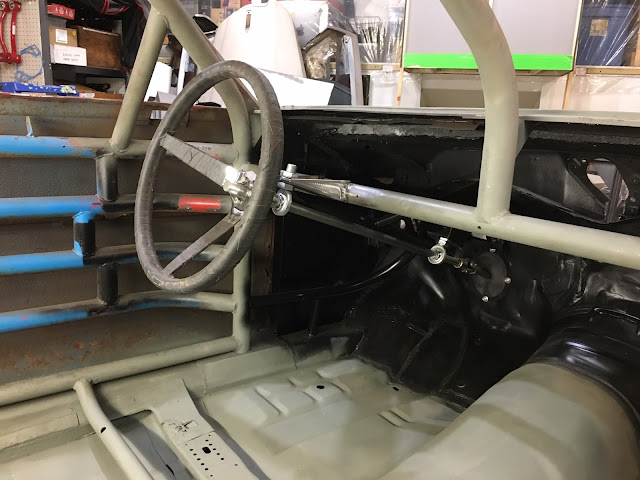Restoration - In slow motion for the cold season! Winter 2019
Well, Fall has transitioned into Winter and our first snow fell today (Nov. 6th, 2019). I managed to make good progress over the Summer but it was time to make room in the garage for my wife to park her vehicle. I think I have completed a good chunk of the really messy, and difficult work, I can now focus my attention on replacing most of the exterior panels. All of those panels covered in bondo in the photo below will be heading to the scrap heap.
In the picture above you can see several "new" body panels on top and under the car. The drivers side rear quarter panel is sitting on the roof, the front fenders are tucked under the car, and the door skins are on the hood. The trunk replacement is duct taped in place, and the GTS hood is in place under the door skins.
Before I put the Torino in hibernation mode for the Winter, I did a test fit of the engine and transmission assembly. In the process I was able to mark where the shifter hole needs to be cut in the floor. With the full weight on the front end I can now see how much the front fenders need to be opened up. I also need to make some modifications in order to get the engine sitting down a little lower. That Blue Thunder hi-rise aluminum intake moves things up quite a bit!
Even though the Torino is tucked away, that doesn't mean I can't tinker around with a few things over the Winter. I have cut out the aluminum dash panel and fuse block panel. After test fitting, I pulled those two panels out of the car before I covered it up so I can take them inside to work on. Most of the electrical components have been mounted on the fuse block panel already. I have also installed all the gauges in the new dash panels. The live run engine stand that I build earlier this year came in handy for testing all electrical connections. I simply had to mark the wires and then transfer them over to the new panels.
Once again, when spring hits, the body panels go on, then I need to get the driveline figured out. Once everything else is fabricated and test fitted, I will be thinking about paint.
Have a good Winter....be safe out there and take care for now.






















































